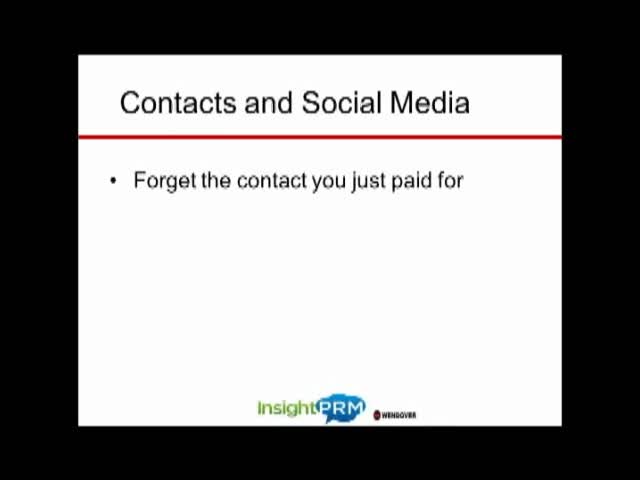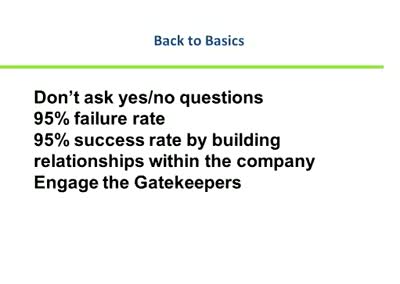Question of the Month: How Do I Write a Better Prospecting Email?
by Shannon F.
Almost everyone has room for improvement when it comes to writing an effective sales email. If you don’t have a marketing department to help you strategize in this area, you may feel a bit lost—after all, sales is your area of expertise, and perhaps you don’t know the finer points of crafting a compelling paragraph. It’s not as hard as you think. We’ll cover 5 common missteps and show you how to correct them. Before long, your emails will be soaring through spam filters and delighting your prospects.
Misstep #1 Salesy or spammy language
If you’re sending emails like this one, you may be in trouble:
Dear Benjamin Klein,
Want to save money on your phone bill? Cut costs the easy way. Call ABC Telecom today to get a free quote.
The email above makes a few mistakes. For one, it auto-fills Benjamin Klein’s first AND last name, making it pretty obvious that you are sending a generic email template. The body of the email also uses the kind of language that triggers spam filters and also makes the prospect unlikely to give it a second glance; “save money,” “cut costs,” “easy,” and “free,” should be used sparingly, and never all at once. The biggest fault of the email is that it fails to build trust or engage the prospect. A better version of this email might sound like this:
Hello Benjamin,
I just wanted to reach out and invite you to an informative webinar we are hosting on ways to lower your phone bill and maximize the value of your telecommunications products during organizational growth or relocation. ABC Telecom has been consulting companies during the relocation process for over 25 years, so we have a lot of valuable advice to share. If this is of interest to you or anyone else within your organization, please register below.
Thanks and have a great day,
Anne Smith
Misstep #2 TMI (Too Much Information) or Misstep #3 TLI (Too Little Information)
You might be the next James Joyce, but don’t waste your talents on your prospect—he or she doesn’t have time to read your stream of consciousness. Instead, carefully choose the details you wish to include. Ideally, a prospecting email should be no more than 4 or 5 sentences: an opening sentence to get the prospect’s attention, a couple of body sentences, and a closing sentence, which should be a call to action (critical!).
Conversely, some salespeople make the mistake of sending an email with little or no context. Perhaps they think that being cryptic will make them seem more interesting. In most cases, however, sending an email like the one below will not raise curiosity so much as it will prompt a removal to the trash folder:
Hi Mary,
Give me a call back at the number below when you have a chance.
Sincerely,
Al
484-678-345
The email below is neither too long nor too short. It has context—Al left a voicemail for Mary the other day—and includes all relevant information, such as Al’s full name and the name of his company.
Hello Mary,
I’d just like to follow up on the voicemail I left the other day. If your organization is growing or relocating, Managed IT Services, Inc. can help you plan for safe and cost-effective changes to your network. Are you available for a quick call on Tuesday, October 9, to discuss your possible needs? Please let me know if that day or another day works for you.
Sincerely,
Al Archer
Sales Representative
484-678-345
Misstep #4: Bad choice of email address, poor subject line, poor first sentence of email
The way your email looks in your prospect’s inbox has a big impact on whether he or she will open it. Ideally, your email address will include your first name (or first initial), your last name, and your company name. Your subject line should be thoughtful and relevant; the whole point of it is to get your prospect to open the message, of course. But keep in mind that in many email programs, the prospect can see not only the subject line, but also the first line or so of text in the email.
Here’s an example of an ineffective email as it appears in a prospect’s inbox:
[email protected] XYZ Co.– October 4, 2013, XYZ Co. Dear Jane Smith, I just wanted to tell you about our services for…
In this example, the email address doesn’t include the name of an actual person – it’s obvious that this is a sales-related message. The subject line doesn’t attempt to engage the recipient or pique her curiosity about the contents of the message. And finally, the author wastes valuable real estate – the first line of text in the email – by including the date, company name, and a generic sentence. (Not to mention that using the prospect’s first and last name is a definite clue that this is an impersonal email template).
Here’s a total redo:
Jeff Parks Your Next Move – Hi Jane, Planning your office relocation? You’re invited to an information session hosted by…
At the least, Jane will probably open this email to see if the contents is of interest to her.
Misstep #5: an attachment or link without an explanation
Nothing raises suspicion like a mysterious link or attachment. Your message may end up caught in the spam filter or being sent straight to trash. If you attach free information or include a link to an online resource, always include a paragraph describing what the prospect can expect when he or she downloads or clicks. Always build trust by giving your prospect context; a brief paragraph about the history of your company or a short list of your credentials gives your email some credibility and allows your prospect to feel comfortable opening any materials that you send.
Have a question related to prospecting, sales, or marketing? Email [email protected]. We may address your question in a future blog post.










